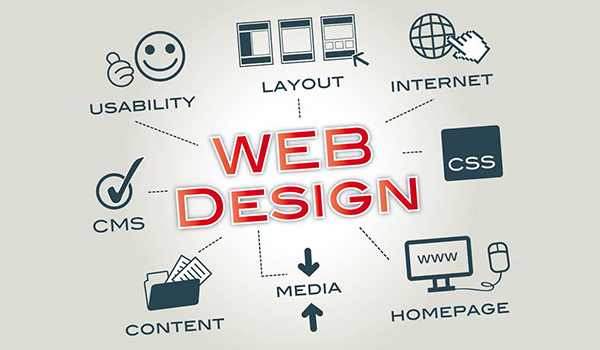Aligned Position Web Design: Building Beautiful and Functional Websites for Your Business
Aligned Position Web Design: Building Beautiful and Functional Websites for Your Business
Blog Article
The Ideal Types of Website Design to Boost Individual Experience and Engagement
In the ever-evolving landscape of electronic communication, the performance of Web style considerably influences user experience and engagement. Numerous style methods, such as minimalist, receptive, and interactive formats, each deal unique benefits that can cater to varied individual demands. Comprehending which sorts of website design finest offer these purposes can be crucial for businesses aiming to boost customer satisfaction and retention. The question remains: which style components genuinely reverberate with users and foster purposeful interaction? The expedition of these concepts reveals essential understandings that may redefine your approach to website design.
Minimal Web Design
As electronic landscapes become significantly chaotic, minimal website design has actually become an effective approach to improving user experience. This style ideology prioritizes simplicity, concentrating on vital aspects while removing unnecessary disturbances. By using enough white area, straightforward navigation, and a limited color combination, minimalist style fosters clarity and routes user interest to vital web content.
The core principle of minimalist website design is to develop a smooth communication for customers. By decreasing cognitive lots, users can quickly understand details without really feeling bewildered. This direct strategy not only improves usability however additionally motivates interaction, as site visitors are more probable to explore a site that is simple and visually enticing to browse.
Furthermore, minimalist style frequently stresses typography and imagery, using these components strategically to convey messages effectively. This concentrate on crucial elements can enhance brand name identity and develop a remarkable individual experience. Fundamentally, minimalist Web design is not just a trend; it is a thoughtful method that identifies the value of user-centered design. By stripping away nonessential elements, developers can develop a more interesting, effective, and enjoyable Web experience for all customers.
Receptive Website Design
In today's diverse digital environment, receptive Web layout has ended up being important for creating a seamless customer experience across a plethora of tools. As users access sites on smart devices, tablets, laptops, and desktops, the capacity of a web site to adjust its design and material to different screen dimensions and resolutions is important.
Responsive website design uses flexible grids, images, and CSS media queries to make sure that Web material is offered efficiently, no matter the device utilized. This method not only boosts the visual charm of a web site however also considerably boosts functionality. Individuals are more probable to engage with a website that offers a regular experience, as it eliminates the aggravation of needing to zoom in or scroll excessively.
By adopting receptive design, services can boost their exposure and get to a broader audience. In recap, receptive Web style is a basic method that boosts user experience, interaction, and total complete satisfaction.
Interactive Website Design
Responsive Web layout prepares for boosting user experience, yet interactive Web design takes this a step better by engaging individuals in an extra dynamic means - Aligned Position Web Design. By incorporating elements such as animations, clickable models, and real-time responses, interactive website design captivates individuals, drawing them into a richer surfing experience
This approach not only promotes interaction however additionally urges customers to explore content actively as opposed to passively consuming it. Techniques such as gamification, where individuals make benefits for completing tasks, can dramatically boost the moment invested on a website and boost total satisfaction. Interactive features can streamline intricate details, making it a lot more absorbable and satisfying.

Integrating interactive layout elements can likewise lead to greater conversion prices, as users are a lot the original source more likely to engage with a website that proactively includes them. Aligned Position Web Design. Eventually, interactive Web style changes user experiences right into memorable journeys, making certain that visitors return time after time
Flat Style
Identified by its minimalistic approach, flat layout highlights simplicity and functionality, removing unnecessary elements and concentrating on necessary features. This layout philosophy focuses on use, guaranteeing that users can navigate interfaces with ease and efficiency. By employing a tidy visual, level style gets rid of the clutter typically discovered in a lot more elaborate styles, thereby enhancing customer emphasis on material and performance.
The hallmark of flat layout depends on its usage of strong colors, basic typography, and geometric shapes. These aspects add to an aesthetically enticing user interface that is both friendly and modern-day. In addition, level style promotes a sense of clearness, enabling individuals to determine important actions and information without diversion.
In addition, flat style is specifically effective in responsive Web style, as its simpleness converts well across different gadgets and display sizes. By focusing on necessary features, flat style not just fulfills user needs but likewise urges smooth interaction, making it an important element of reliable Web layout strategies.
Adaptive Website Design
Flexible website design customizes the user experience by producing several dealt with formats tailored to different screen dimensions and tools. Unlike receptive layout, which fluidly adjusts a single layout, adaptive style uses distinct layouts for certain breakpoints, guaranteeing ideal discussion on numerous systems. This approach allows designers to focus on the special features of each tool, boosting usability by delivering exactly what individuals require based upon their context.
Among the key advantages of adaptive website design is its capacity to maximize lots times and performance. By serving tailored material and pictures that fit the individual's gadget, web sites can decrease data usage and improve loading rates. This is particularly beneficial for customers with slower links or minimal information strategies.

In addition, adaptive layout helps with an extra consistent and controlled branding experience. Since developers produce multiple designs, they can make certain that the visual components straighten with the brand's identity across various systems - Aligned Position Web Design. This results in a cohesive individual experience, boosting engagement and promoting individual retention
Verdict
Minimalist layout cultivates clearness and emphasis, while responsive design ensures flexibility throughout different devices, promoting accessibility. Jointly, these layout comes close Homepage to contribute to the creation of user-friendly settings that not just enhance fulfillment but also drive greater conversion rates, underscoring their critical relevance in modern Web layout techniques.

Minimalist design fosters clearness and focus, while responsive style makes sure flexibility throughout numerous tools, advertising accessibility. Jointly, these layout comes close to add to the production of straightforward environments that not just boost satisfaction yet additionally drive greater conversion prices, highlighting their important value in modern Web design techniques.
Report this page